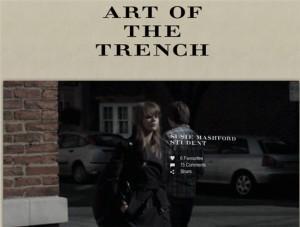 Print
Print  PDF
PDF Q: Are dynamic storytelling and transmedia storytelling the same thing?
Q: Are dynamic storytelling and transmedia storytelling the same thing?
A: Dynamic storytelling, used in the context of the Coca Cola initiative, is storytelling designed to adapt to social-connected multi-platform world where stories are shared, co-created and relational, adapting and evolving through the audience. Transmedia storytelling is another way of saying this, although Coke might argue that it isn’t as expansive or integrated enough as dynamic storytelling is with their Brand Vision and Architecture. Transmedia storytelling can, in fact, mean different things—and the definition of it is often debated. For some applications, a transmedia story takes a well-defined storyworld and crafts stories that allow the audience to experience, explore and expand that world. Entertainment properties tend to fit this definition. Brand stories are different because much of the brand story lives in the consumer’s head. That’s their brand equity. Coke’s brilliance has been creating an integrated and consistent message that triggers existing metaphors in new ways and expanding the cognitive and emotional relationship it shares with its customers.
The danger for Coke (and probably one they ‘ve addressed as they’re very good at this marketing stuff) is that they become so focused on the processes and jargon inherent in their Dynamic Storytelling approach and lose site of the core human emotions that fuel their most effective brand stories and relationships.
From my perspective, Dynamic Storytelling and Transmedia Storytelling are the same. They both are an intentional story-based approach for our evolving environment; they both tell stories designed to take advantage of multiplatform distribution and the importance of coherence to a core story–in Coke’s case this is referred to as Live Positively. The Coke storyworld is created by our combined and individual understandings of what it means to live positively, to share joy. The social technologies allow them to encourage and benefit from their customer-storytellers, further integrating the Coke story with that of the consumer’s. Coke also benefits from a core story that is totally aspirational. It isn’t a surprise that Coke sales rise when times are hard. It speaks to humanity and hope, even if it is a soft drink.
Q: Can a luxury brand use transmedia storytelling in a way that’s in line with brand positioning?
A: Any brand can use transmedia storytelling. A brand is, after all, a story. Transmedia storytelling just demands the intentional use of multiple platforms to tell consistent and additive narratives that extend the brand’s core story. In my presentation “Transmedia Storytelling as a Content Marketing Strategy” I show how different brand archetypes can use Transmedia Storytelling. The purpose of archetypes in brand story development is to focus the brands story and identify the core values and universal metaphors that will facilitate the connection between the brand and the customer. A good brand story invites the customer in emotionally long before the bells and whistles of elaborate content. A transmedia storytelling campaign translates human emotions and experience into shared metaphors.
The fashion world has many other examples of creating a personality and archetype that embodies their brand. Chanel and Tiffany’s, for example, create narratives around their core story. Prada launched a short film at Cannes that missed the mark from a psychological perspective. The too little too late humor does not support their brand story, unless they want to be perceived as the clothes of the rich, spoiled and self-indulgent. That’s definitely a market, but smaller than the ‘everyone’ their tagline suggests. The long set-up and the impact of Helena Bonham Carter on the screen makes the tagline “Prada Suits Everyone” rather disingenuous, even allowing for the fact that we expect Bonham Carter to do something truly outrageous at any moment. Armani has engaged fans by launching Twitter-based discussions.
Burberry is an another example of a high fashion brand creating a transmedia story, “The Art of the Trench” playing on the rich metaphors of trench coats and Burberry brand as dominating that product—so much so that Burberry has achieved being seen as synonymous with trench much the way that Kleenex is with tissues or Coke is with cola, Pepsi notwithstanding. Burberry has shown great courage in taking a luxury brand into social waters, but it was, and is, necessary for any fashion house that wants to grow their business beyond couture. There is a good slideshare on the Burberry case by Isabelle Quevilly, Brilliant Noise.

